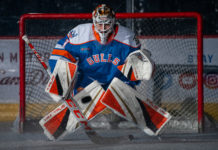Padres Column Mostly about the Padres
I live on the East Coast.
That means many things, most of them upsetting to a native San Diegan.
You might think missing Padres games on TV would be one of them.
Not this season.
The Padres are worse than I expected.
How much worse?
About 10 games.
As of this writing, the Padres have a record of 42 wins and 61 losses are 15.5 games out of first place and 14.5 games out of the Wild Card. (Editor note: As of today 8/9/18 they are 45-71 & 19 games back 19.5 back in the Wild Card) The Padres are dead last in the NL West and dead last in the Wild Card hunt. I thought the team would be closer to 47 wins and 56 loses – probably still near last place but more respectable.
At one point this season, the Padres were only four games under .500. Then the Friars lost 23 of 30. I didn’t see any of those games, but I monitored the box scores and read the game summaries. They told the same story, one of a suddenly listless club overwhelmed by the grind of a Major League season.
That’s what happens to a young team. A small winning streak of the kind the Padres enjoyed in May and early June becomes deceptive. Young players assume wins can come easily and underestimate the microscopic difference between victory and defeat in the Big Leagues. Victories are made up very small margins of advantage play-to-play and pitch-to-pitch. The quantitative value of preparation, scouting, focus, execution and anticipation multiplies with each passing inning. The best teams meld these fluidly and make it appear easier than it is. Young teams find a groove and mistakenly assume it is self-replicating. It is not.
I was once honored to attend a dinner in Washington that featured Hall of Famers Ryne Sandberg and Dave Winfield. To dine with Winfield, one of my Padre idols, was an incomparable thrill. It was all I could do not to choke on my food and dribble wine down my chin.
I sat in awe of Winfield, but I learned something special from Sandberg. He taught all of us at the table how he prepared for each ballgame. Some of the details may elude me as the dinner was more than a decade ago, but here is what I remember.
First, before taking infield practice (something I am told most Major Leaguers no longer bother with), Sandberg would play catch. He would not allow himself to take ground balls on the field until he had thrown ten baseballs to a targeted spot on the player he was playing catch with: ten just beneath and inside the right shoulder, ten just inside and beneath the left shoulder, ten just to the right of his sternum and ten just to the left of his sternum.
Second, Sandberg would take grounders at 2nd base and work on his movement to the right and left and his pivot to 2nd base while throwing to start a double play. Sandberg made a point of saying he always took infield practice in his game uniform. He did not wear a practice jersey or shoes other than his game-day cleats. He made a point of emphasizing how he practiced in the same gear he would wear in the game. The point: he wanted his body to understand the same feel before and during the game.
Third, after finishing his infield routine, Sandberg said he would position himself deep behind 2nd base and have a coach smack one-hop line drives that he would have to backhand before throwing to first. He would have to execute that play without missing the ball or pulling the player off 1st base before he would go to the clubhouse.
That is preparation. That is what makes a Hall of Famer.
I worry about the young Padres I occasionally see on TV. My cable system is currently tempting me with the MLB Extra Innings package, so I have watched the team recently. Two plays stand out in my mind. In the top of the 4th inning of the July 23rd game in New York against the Mets, Travis Jankowski hit a three-hopper up the middle. By the way he ran down to 1st and the way he looked toward the shortstop, it appeared Jankowski thought he would be safe for sure. But the shortstop, Amed Rosario, made a spectacular catch and throw to nail Jankowski by an eyelash.
In the top of the 5th inning of that same game, Manuel Margo blasted a triple to deep center. Great at bat. But if Margot were to go back to the tape he would see he took a halting turn around 1st base and had to stutter-step his way past 2nd base. He was safe. He knocked in a run. All good. But that route was not as fluid as it could or should have been and minor flaws like that may in the future deprive him of the speed necessary to beat a better fielder and better throw.
The Padres won the game I watched 3-2. These small flaws did not prove hazardous. But I am willing to bet equally small miscues contributed to that horrid 7-23 streak and turned the season into a doleful summer bummer.
Offensively, the Padres are offensive — dead last or second to last in every vital category. Hits are scarce, homeruns a novelty and RBIs maddeningly infrequent. And this team strikes out. A LOT. Through 103 games the Padres whiffed 976 times, by far the most in the National League.
With this young team there is no room for error.
There is room for preparation.
Think Sandberg.
Do you have a Padres or Clairemont question for Major…. Heck, maybe even a White House question? Send us an email to: AskMajor@ClairemontTimes.com we’ll forward them.
Major Garrett was born and raised in Clairemont, is Chief White House Correspondent for CBS News, host of “The Takeout” podcast and author of the upcoming book “Mr. Trump’s Wild Ride: The Thrills, Chills, Screams and Occasional Blackouts of His Extraordinary First Year in Office.”




